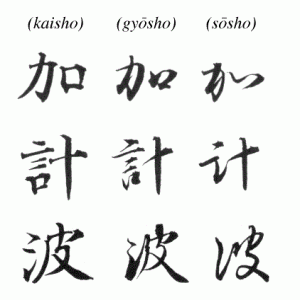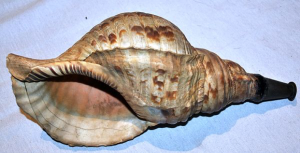日本の書道を見たことがあるけど、Jハウスの書道のイベントも行ったことがあるのに、書道の種類や歴史について、あまり知りません。だから、今週調べてみたかったんです。
Calligraphy is the fine art of writing beautiful characters with grace and presence. Although it has been expected for hundreds of years that many nobles and people of high education cultivate calligraphy skills, it is also practiced by many people in Japan from schoolchildren to experienced professional calligraphers. It is thought that the flow and feeling of the characters must come from the heart, and these values are reflected in society when many children are taught that one’s handwriting reflects one’s character and personality.
Calligraphy tools include brushes, ink, inkwells, paper, and often a paperweight and a felt pad to place under the paper. Like many other arts supplies, these tools may come in a range of styles, quality and prices depending on the purpose and tastes of the calligrapher. The brush may be held with the tankoho method—holding the brush like a pencil—or the sokoho style, adding the ring finger to the grip. One artist Choso Yabe uses brushes the size of mops, with gigantic paper.

写真:http://lhsjnhs.tumblr.com/post/60872302606/in-japan-calligraphy-or-shodou-is-popular-among
Although calligraphy stemmed from Chinese culture, uniquely Japanese writing styles evolved that are characteristically slender and graceful. The most common one is 楷書 kaisho or “block style,” a formal style which holds rigid stroke order and proportions. The semi-cursive 行書 gyosho or “running hand style,” lends a sense of motion and fluidity continuing between each stroke and gives more creative license to the calligrapher regarding style and stroke order and shape. The flowing cursive 草書 sosho or “grass hand” style conveys the feeling of wind blowing grass. Since of its simplicity and cursive style, it is often illegible. One must practice kaisho first in order to be able to skillfully simplify and interpret characters into the latter two styles.
Calligraphy has expanded to include big brush calligraphy shows and robot calligraphy. It is taught widely in Japan to cultivate young people’s interest in traditional culture and to find peace in bustling work life. Thus this versatile art is still thriving in modern Japan.
書道の練習を通して私が書く漢字が綺麗になって、日本の文化や歴史も分かるようになるといいんですが。書道から書いた人の性格が分かるということを知らなかっ たけど、これから他の人の書き方に注意し始めるかもしれません。
大筆書道のビデオ:https://www.youtube.com/watch?v=RkX8r4JvDXw
Sources
https://www.gohitsushodostudio.com/shodo-writing-styles/
http://factsanddetails.com/japan/cat20/sub129/item2886.html
